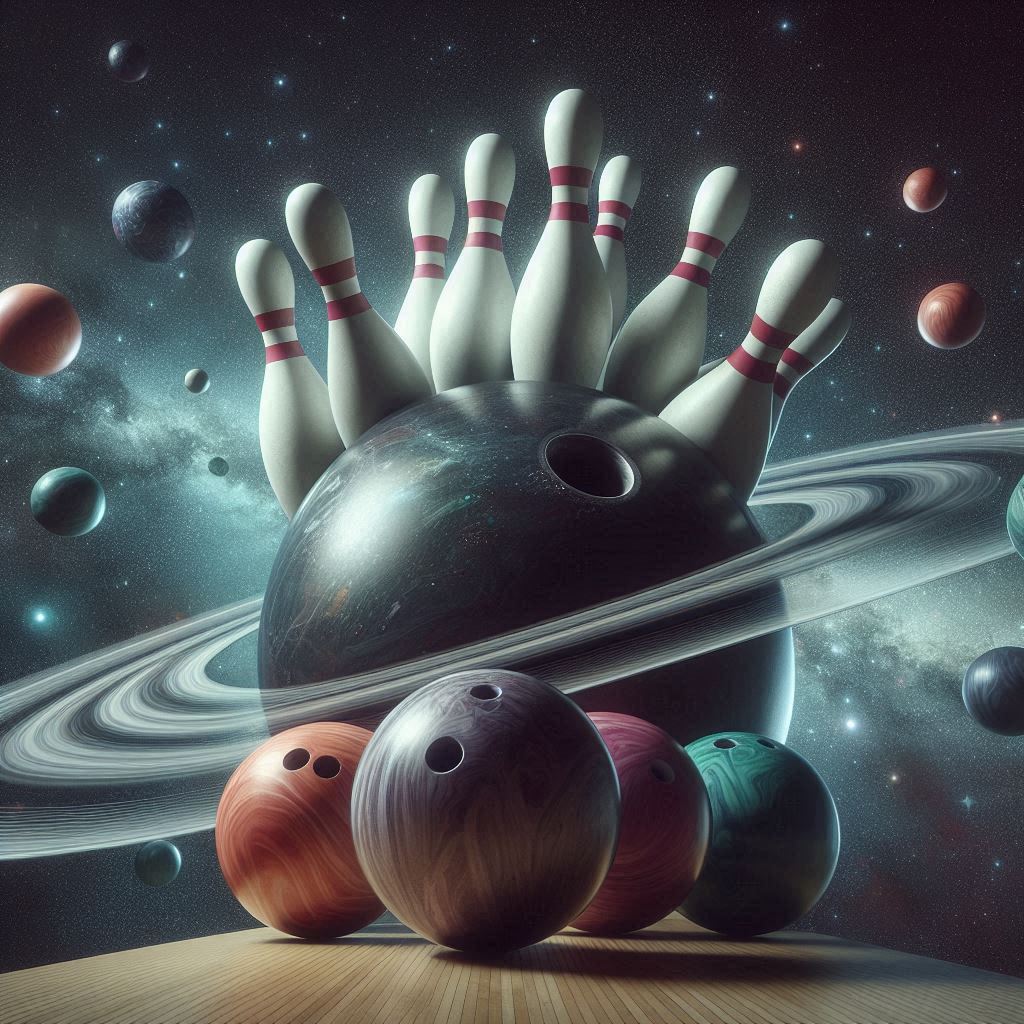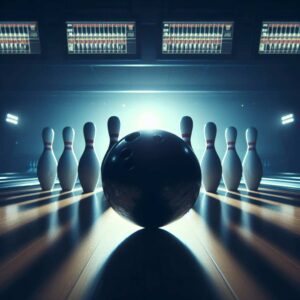Are you a serious bowler looking to take your game to the next level? If so, you’ve likely heard about ebonite urethane bowling balls and how they can give you an edge on the lanes. These specialized balls are designed to provide bowlers with enhanced control, increased hooking potential, and better overall performance, especially on drier lane conditions.
In this comprehensive guide, we’ll dive deep into the world of ebonite urethane bowling balls, exploring their unique characteristics, benefits, and how to choose the right ball for your bowling style.
We’ll also cover popular models, maintenance tips, drilling techniques, and resources for purchasing these high-performance balls. Whether you’re a seasoned pro or just starting to explore the world of reactive resin bowling balls, this guide will provide you with the knowledge you need to make an informed decision and take your game to new heights.
What are Ebonite Bowling Balls?
Ebonite is a rubber-based compound that has been used in the production of bowling balls for decades. It is known for its distinctive black color and unique properties that make it an ideal material for creating high-performance bowling balls.
Ebonite bowling balls are prized for their ability to generate a strong backend motion, which allows for increased hooking potential and greater entry angle into the pocket. This is particularly beneficial for bowlers who possess a higher rev rate or those who prefer to play a more aggressive line on the lanes.
The history of ebonite bowling balls dates back to the early 20th century when the Ebonite Rubber Company began manufacturing rubber-based bowling balls. Over the years, advancements in materials and manufacturing processes have led to the development of modern ebonite bowling balls that offer superior performance and durability.
What are Urethane Bowling Balls?
Urethane is a type of reactive resin that is used as a coverstock material for bowling balls. Urethane bowling balls are known for their ability to generate a strong midlane reaction and enhanced backend motion, making them a popular choice among bowlers who prefer to play a more aggressive line on the lanes.
One of the key advantages of urethane bowling balls is their durability. Unlike traditional reactive resin coverstocks, which can become dull and lose their reaction over time, urethane balls maintain their aggressive motion and hooking potential for longer periods. This makes them an excellent choice for bowlers who frequent high-volume bowling centers or who participate in tournaments where maintaining consistent ball reaction is crucial.
Urethane bowling balls are also known for their versatility. They can be effective on a wide range of lane conditions, from drier to moderately oily patterns, making them a valuable addition to any bowler’s arsenal.
Comparison: Ebonite vs. Urethane
While both ebonite and urethane bowling balls offer distinct advantages, there are some key differences between the two materials that bowlers should be aware of.
Reaction Characteristics:
-
- Ebonite balls tend to have a more pronounced backend motion, hooking more aggressively on the backend of the lane.
- Urethane balls typically offer a stronger midlane reaction and a more controlled backend motion.
Lane Condition Preference:
-
- Ebonite balls are generally preferred on drier lane conditions, where their aggressive backend motion can be fully utilized.
- Urethane balls can be effective on a wider range of lane conditions, from drier to moderately oily patterns.
Longevity and Durability:
-
- Ebonite balls are known for their durability and can maintain their reaction for longer periods.
- Urethane balls are highly durable and often outlast traditional reactive resin coverstocks in terms of maintaining their aggressive motion.
Hooking Potential:
-
- Ebonite balls typically offer more hooking potential, especially on drier lane conditions.
- Urethane balls can also generate significant hook, but their motion is often more controlled and less aggressive than ebonite balls.
Controlling Ball Motion:
-
- Ebonite balls can be more challenging to control due to their aggressive backend motion, especially for bowlers with lower rev rates.
- Urethane balls offer more control and predictability, making them a popular choice for bowlers seeking a more consistent ball reaction.
While both materials have their strengths and weaknesses, the choice between ebonite and urethane ultimately comes down to personal preference, bowling style, and lane conditions.
Choosing the Right Ebonite/Urethane Ball
When it comes to selecting the perfect ebonite or urethane bowling ball, there are several factors to consider. Here are some key elements to keep in mind:
Ball Weight:
-
- Choosing the correct ball weight is crucial for optimal performance and injury prevention.
- Generally, balls between 14-16 pounds are recommended for most adult bowlers, but the ideal weight will vary based on individual strength and bowling style.
Coverstock:
-
- Ebonite and urethane are both coverstocks, but there can be variations in their formulations and finishes (solid, pearl, hybrid, etc.).
- Different coverstocks will react differently on various lane conditions, so consider your typical bowling environment and lane conditions.
Core Design:
-
- The core of a bowling ball plays a significant role in its overall motion and performance.
- Asymmetric cores often promote more aggressive backend motion, while symmetric cores offer a more controlled and predictable reaction.
- Matching the core design to your rev rate and desired ball motion is crucial.
Match to Your Bowling Style:
-
- If you’re a high rev-rate bowler who prefers an aggressive line, an ebonite ball with an asymmetric core may be an ideal choice.
- For bowlers with lower rev rates or those seeking a more controlled motion, a urethane ball with a symmetric core could be a better fit.
Lane Conditions:
-
- Consider the typical lane conditions you’ll be bowling on. Ebonite balls excel on drier lanes, while urethane balls can handle a wider range of conditions.
Arsenal Composition:
-
- Build a well-rounded arsenal with balls that complement each other for different lane conditions and oil patterns.
By carefully evaluating these factors and working with a knowledgeable pro shop professional, you can select an ebonite or urethane bowling ball that aligns perfectly with your game and helps you achieve your desired performance on the lanes.
Popular Ebonite Urethane Ball Models
When it comes to ebonite urethane bowling balls, there are several popular models that have gained a reputation for exceptional performance and quality. Here are some of the top-selling and highly-rated ebonite urethane balls on the market:
Ebonite Cyclone:
-
- Coverstock: Urethane
- Core: Asymmetric
- Key Features: Strong midlane reaction, aggressive backend motion, ideal for medium-heavy oil patterns.
- Specs: 16 lbs, RG (Radius of Gyration): 2.50, Differential: 0.051
Ebonite Mission Unknown:
-
- Coverstock: Solid Urethane
- Core: Asymmetric
- Key Features: Versatile performance on a wide range of lane conditions, controllable backend motion, excellent for bowlers with higher rev rates.
- Specs: 15 lbs, RG: 2.54, Differential: 0.053
Ebonite Game Breaker 4:
-
- Coverstock: Pearl Urethane
- Core: Asymmetric
- Key Features: Aggressive midlane read, strong backend motion, ideal for medium-dry lane conditions.
- Specs: 16 lbs, RG: 2.48, Differential: 0.056
Ebonite Destiny Pearl:
-
- Coverstock: Pearl Urethane
- Core: Symmetric
- Key Features: Smooth, predictable motion, excellent length and backend continuation, suitable for a variety of lane conditions.
- Specs: 15 lbs, RG: 2.53, Differential: 0.049
Ebonite Maverick:
-
- Coverstock: Solid Urethane
- Core: Asymmetric
- Key Features: Strong midlane read, aggressive backend motion, ideal for drier lane conditions and higher rev rates.
- Specs: 16 lbs, RG: 2.51, Differential: 0.054
These models represent just a few of the many ebonite urethane bowling balls available on the market. When selecting a specific ball, be sure to consider your individual bowling style, rev rate, and the lane conditions you typically encounter. It’s also helpful to read reviews and seek advice from experienced bowlers or pro shop professionals to ensure you make an informed decision.
Maintaining and Caring for Ebonite/Urethane Balls
Proper maintenance and care are essential for ensuring that your ebonite or urethane bowling ball performs at its best and maintains its aggressive motion for as long as possible. Here are some tips for keeping your ball in top condition:
Cleaning:
-
- Regular cleaning is crucial for removing dirt, oil, and debris that can accumulate on the ball’s surface and affect its performance.
- Use a bowling ball cleaner specifically formulated for reactive resin coverstocks like ebonite and urethane.
- Avoid using harsh chemicals or abrasive pads, as they can damage the ball’s surface.
Resurfacing:
-
- Over time, the ball’s surface can become dull or develop a buildup of oil, affecting its reaction on the lanes.
- Resurfacing your ball with a professional ball resurfacing machine can restore its out-of-the-box reaction and hooking potential.
- It’s generally recommended to resurface your ball after every 60-80 games or as needed based on its performance.
Storage:
-
- Proper storage is essential for preventing damage and maintaining the ball’s performance.
- Store your ball in a cool, dry place, away from direct sunlight or extreme temperatures.
- Use a ball cup or case to protect the ball’s surface and prevent it from rolling around during transport.
When to Replace:
-
- Even with proper care, bowling balls will eventually need to be replaced due to wear and tear.
- If your ball becomes cracked, severely damaged, or loses its reaction despite resurfacing, it’s time to invest in a new one.
- Consulting with experienced bowlers or pro shop professionals can help you determine when it’s time to retire an old ball.
Drilling for Ebonite/Urethane Balls
Proper drilling is crucial for maximizing the performance of your ebonite or urethane bowling ball. Here are some key considerations:
Layout and Fit:
-
- The layout of the holes and their position on the ball can significantly impact its reaction and overall performance.
- A professional ball driller can recommend the best layout based on your bowling style, rev rate, and the ball’s characteristics.
- Ensuring a proper fit is essential for comfort, control, and consistently repeatable shots.
Drilling Patterns:
-
- Different drilling patterns can be used to achieve specific ball motions and reactions on the lanes.
- Common patterns include conventional grip, fingertip grip, and various weight hole configurations.
- The choice of drilling pattern depends on your personal preferences, desired ball motion, and the ball’s core design.
Re-Drilling or Re-Fitting:
-
- As your bowling style or physical characteristics change over time, it may be necessary to re-drill or re-fit your ball.
- Signs that you may need a re-drill or re-fit include discomfort, inconsistent release, or a change in your rev rate or ball speed.
- Consulting with a professional ball driller can help determine the best course of action.
Seeking Professional Advice:
-
- Working with experienced bowlers or pro shop professionals can be invaluable when it comes to drilling your ebonite or urethane ball.
- They can provide personalized recommendations based on your individual needs and preferences, ensuring that your ball is drilled for optimal performance.
By following these guidelines and seeking advice from experienced bowlers or pro shop professionals, you can ensure that your ebonite or urethane bowling ball is drilled properly, maximizing its potential and helping you take your game to new heights.
Resources for Buying Ebonite/Urethane Balls
When it comes to purchasing ebonite or urethane bowling balls, you have several options available. Here are some resources to consider:
Online Retailers:
-
- Many reputable online retailers specialize in selling bowling equipment, including ebonite and urethane balls.
- Websites like BowlingBall.com, BowlersMart.com, and BowlingBallExchange.com offer a wide selection of balls from various manufacturers, often at competitive prices.
- Online retailers may also provide detailed product information, customer reviews, and convenient shipping options.
Local Pro Shops:
-
- Your local bowling center’s pro shop is an excellent resource for purchasing ebonite and urethane balls.
- Pro shop professionals can provide hands-on guidance, recommend the right ball based on your specific needs, and ensure proper drilling and fitting.
- They may also offer ball resurfacing services and accessories like bowling shoes, bags, and apparel.
Buying Used/Resurfaced Balls:
-
- Purchasing used or resurfaced ebonite and urethane balls can be a cost-effective option, especially for those on a budget or those looking to expand their arsenal.
- Online marketplaces like BowlingBall.com’s Used Ball Finder or local pro shops may have a selection of pre-owned balls available.
- Resurfaced balls can often perform like new, making them a viable alternative to brand-new equipment.
Manufacturer Websites:
-
- Major bowling ball manufacturers like Ebonite, Storm, and Roto Grip often have online stores or dealer locators on their websites.
- These resources can help you find authorized dealers or pro shops that carry their specific ebonite and urethane ball models.
Bowling Events and Tournaments:
-
- Attending bowling events, tournaments, or expos can provide opportunities to purchase ebonite and urethane balls directly from manufacturers or retailers.
- These events may offer special deals, discounts, or the chance to test out various ball models before making a purchase.
Regardless of where you choose to purchase your ebonite or urethane bowling ball, it’s essential to do your research, read reviews, and seek advice from experienced bowlers or pro shop professionals. This will ensure that you make an informed decision and select the ball that best suits your bowling style, needs, and preferences.
Conclusion
In the world of high-performance bowling, ebonite and urethane bowling balls have earned a well-deserved reputation for their ability to deliver unparalleled hooking potential, control, and durability. Whether you’re a seasoned pro or a bowler looking to take your game to the next level, understanding the unique characteristics of these specialized balls can be a game-changer.
Throughout this comprehensive guide, we’ve explored the key differences between ebonite and urethane balls, their respective strengths and weaknesses, and how to choose the right ball for your bowling style and typical lane conditions. We’ve also delved into popular models, maintenance tips, drilling techniques, and resources for purchasing these high-performance pieces of equipment.
As the future of bowling technology continues to evolve, it’s likely that we’ll see even more advancements in ebonite and urethane ball designs, further pushing the boundaries of what’s possible on the lanes. However, one thing is certain: the pursuit of the perfect strike will always be a driving force for bowlers, and ebonite and urethane balls will undoubtedly play a crucial role in helping them achieve that goal.
So, whether you’re seeking maximum hooking potential, increased control, or simply want to take your game to new heights, consider investing in an ebonite or urethane bowling ball. With the right ball in your arsenal, you’ll be well on your way to unleashing unstoppable hook and dominating the lanes like never before.





